John Hurrell – 4 January, 2012
Cullen's lamp lit, gazed upon, erratically turning globes, and plastic fruit set in scooped out medical books seem intended as contemplative sculpture for assisting thought about western histories of geographic or scientific discovery. However they also might go beyond that and be allegories for art itself and the desring gaze.
Paul Cullen book
r/p/m
Essays by Tessa Laird, Ruth Watson, Richard Dale, and Melissa Laing
Colour and b/w images
Designed by Narrow Gauge and Jayme Yen
5 paper covers, 110 pp
This publication, with its four short discussions of Cullen’s distinctive kinetic sculptures and drawings (shown recently at Jane Sanders) and five pink, pale blue, banana, green and buff dust covers, is an innovative anthology of images and text. What’s great about it is its detail and interconnectedness - the fact that it is crammed with information that makes you look closely at its pages and covers.
The humour of those simultaneous covers (proposals for different Cullen exhibitions in various architectural/historic sites in Europe and Aotearoa) and assorted photographs is related to other Cullen projects, like the upside down ceiling furniture, or the travelling pencil photographs and texts.
This is a beautiful book packed with information, but it does not provide anything like the experience of standing in front of these sculptures and watching fluid pumped through plastic tubing, or seeing motorised objects set in wooden furniture turning. Perhaps videos with Youtube links on Cullen’s or Sanders’ websites might help alleviate that problem - although filmed videos are not directly experienced kinetic sculptures.
A big component is the use of blue and white photography suggesting blueprints with the documentation, or old carbon paper for the drawings. Cullen’s hand drawn diagrams figuring out his furniture modification and trajectories for use of water and/or positioning of electrical motors (elucidating simple circuits, rotating stars, or orbits for planets) are mixed with duplicated illustrations and title pages from old physics or astronomy books. He is seen as a researcher going through the motions (exploring the circulation but not the physical laws) as part of an ever-inventive but now quaint, pre-Rutherford tradition.
Of the four brief essays, Melissa Laing’s possibly is the most helpful. It discusses Deleuze and Guattari’s notion of paranoid despotic mutable signifying regimes (such as ‘knowledge machines’), raising the question of accumulating signifiers that encourage new over-arching interpretations of Cullen’s kinetic project - so that all the diverse components are linked up to confirm some ultimately symbolic level, some definitive conclusion to be arrived at.
Looking at Cullen’s many drawings with their written notes it is obvious he has been thinking about how his mock-scientific experiments are read. Included on one is a scribbled quotation from Foucault’s The Archaeology of Knowledge. The quote (p.51 Cullen) goes like this:
The analysis of thought is always allegorical in relation to the discourse that is employed. Its question is unfailingly of: what was being said in what was said.
If this quotation has a point it is that the presentations of circulating fluids and revolving fruit, globes and buckets do more than just exist for their own sake. They also (in what they say) lampoon the accumulation and global dispersal of factual scientific laws and confirmed theory. The fact that they are hermetic suggests an affinity with the cells, tanks and sealed off systems of the early works of Haacke, Koons and Halley - and so they are maybe less about the underpinnings of science and more about teaching specifically (the imparting of information and values that students later feed back), or art and various incestuous and formulaic discourses.
Cullen’s lamp lit, gazed upon, erratically turning globes, and plastic fruit set in scooped out medical books seem intended as contemplative sculpture for assisting thought about western histories of geographic or scientific discovery. However they also might go beyond that and be allegories for art itself and the desiring gaze, being also collectable objects calculated to mesmerise.
Extending that visual notion into the sexual, his merging of dismantled and reconfigured furniture with motors tangentially provides an unabashedly wild and obscene humour, for tables and chairs can never be neutral here as functional supports: instead the chairs seem designed to be sat upon (anally inserting spinning fruit, or moving serrated cacti), the tables to be masturbated on (with spinning buckets and seesawing rulers), and sinks for straddling and copulating in. There is a nutty feverishness just bubbling beneath the surface of this DIY-scientist’s quest for more indisputable laws; a hint of savage satire (in the manner of William Burroughs or Terry Southern) ridiculing the drives that dominate our species, an oblique comment on the ‘rational’ laboratory libido.
Whatever the case about interpretation (a critique of scientific certainty and measurable governmental control, or otherwise), Ruth Watson is exactly right when she says in her text, ‘…oddly, the limited motion of an upside-down lime green bucket on a pre-loved Formica table is appealing. It charms and amuses…all seems quite logical, as well as faintly absurd.’ (p.101) Of course the discussed movement can’t be separated from the two featuring objects, or Cullen’s organisation and unusual sense of carpentry, but ‘appeal’ they do - on the simplest level, if you forget about allegory. This lovely book can’t replace the fascinating experience of seeing them directly, running in a gallery, but it is a handy, very carefully put together reminder of that, as well as a lively set of proposals for a few hypothetical exhibitions of the future.
John Hurrell
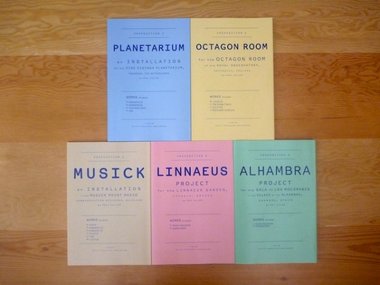


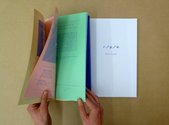
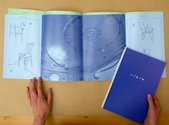
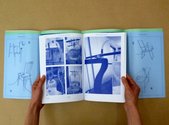

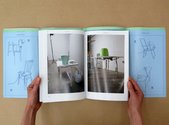
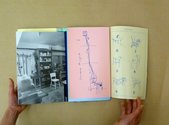

 Two Rooms presents a program of residencies and projects
Two Rooms presents a program of residencies and projects Advertising in this column
Advertising in this column



This Discussion has 0 comments.
Comment
Participate
Register to Participate.
Sign in
Sign in to an existing account.